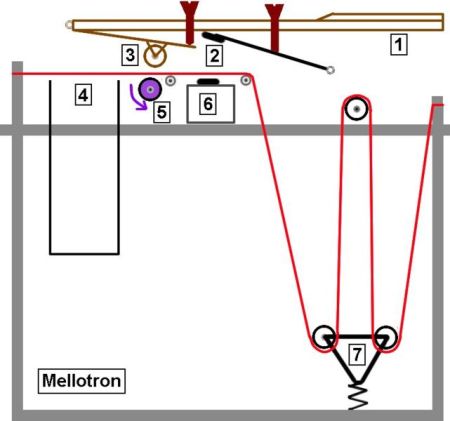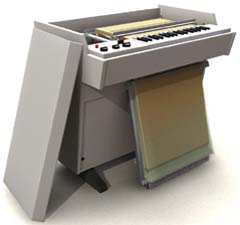
You want The Beatles, Yes, David Bowie, Led Zeppelin ? Then GForce M-Tron Pro virtual instrument is for you
November 19, 2008The GForce M-Tron Pro virtual instrument is an incredible emulation of the classic Mellotron—the unique tape-playback keyboard used by such luminaries as The Beatles, Yes, David Bowie, Led Zeppelin, The Moody Blues and Radiohead.
The 3.5GB sound library features over 200 tape banks (sample sets) including 19 of the original GForce M-Tron tape banks, which have been remastered at London’s legendary Abbey Road Studios. M-Tron Pro also delivers 45 brand-new tape banks and over 700 patches, many created by world-class recording artists and programmers. Select from the patches or open the lid to access G:sampler’s easy editing controls for layers, splits, reverse, half-speed and more. Use it in stand-alone mode (Mac/PC) or as a plug-in for most popular host applications.
Dating back to the pre-digital 1960s, the Mellotron was one of the first sample-based keyboards. Artists such as The Moody Blues, Yes, The Beatles, Elton John, David Bowie, Led Zeppelin, Genesis and Pink Floyd used them to emulate strings and other orchestral instruments, while the BBC used them extensively for sound effects. When pressed, each key engaged playback of a discrete strip of tape with an eight-second recording of that note played on an instrument such as a violin. The tape rewound after key release. The lack of looping gave the instrument a unique playing characteristic in addition to its already distinct sound. The more commercial models featured the ability to switch between three different sound sets within the installed tape bank—and adventurous owners could physically swap tape banks with care and patience.
The actual size of a Mellotron!
The Mellotron is an electro-mechanical, polyphonic keyboard originally developed and built in Birmingham, England in the early 1960s. It superseded the Chamberlin, which was the world’s first sample-playback keyboard. The heart of the instrument is a bank of parallel linear[1] magnetic audio tapes, which have approximately eight seconds of playing time each. Playback heads underneath each key enable the playing of pre-recorded sounds.
The earlier MKI and MKII models contained two side-by-side keyboards: The right keyboard accessed 18 “lead/instrument” sounds such as strings, flutes, and brass; The left keyboard played pre-recorded musical rhythm tracks in various styles.
Throughout the 1970s, the Mellotron had a major impact on rock music, particularly the 35 note (G-F) model M400. The M400 version was released in 1970 and sold over 1800 units, becoming a trademark sound of the era’s progressive bands. The earlier 1960’s MK II units were made for the home and the characteristics of the instrument attracted a number of celebrities. Among the early Mellotron owners were Princess Margaret, Peter Sellers, King Hussein of Jordan and according to Wiki Scientology founder L. Ron Hubbard.

Mellotrons were normally pre-loaded with string instrument and orchestral sounds, although the model 400’s tape bank could be removed with relative ease by the owner and loaded with banks containing different sounds including percussion loops, sound effects, or synthesizer-generated sounds, to generate polyphonic electronically generated sounds in the days before polyphonic synthesizers.
The GForce M-Tron…
GForce first paid homage to this venerable keyboard with the M-Tron virtual instrument. Now M-Tron Pro goes far beyond—and is as much a labor of love as the Mellotron itself. GForce has remastered 19 of the original M-Tron tape banks at London’s legendary Abbey Road Studios, resulting in a warmth of tone surpassing the original. M-Tron Pro has over 200 tape banks—40 of which are looped—including 45 completely new ones not found in the original GForce M-Tron. This massive library comes with 700+ presets, many of which were created by world-class recording artists and programmers.


Thank for your post.